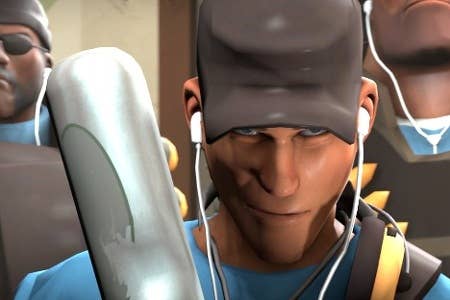How Valve's community solves its biggest problems
Users provide "really elegant business solution" as alternative to contractors, says Holtman
Valve's Jason Holtman has detailed how the creator of hits like Portal and Team Fortress uses the community to scale development and marketing beyond the traditional channels.
Speaking during the keynote of Develop in Brighton 2012, the director of business development said that open dialogue and interacting with its players helped the business announce the sequel to Portal without using any traditional routes to market.
"How do we announce Portal 2? It's a classic business problem. The classic thing is someone would call up the business department, the marketers, let's go and get our spend in place. This is not what we did at Valve," he said.
"We hardly make anything any more, not because we're lazy, but the community has solved the problem better"
Jason Holtman, Valve
"There was nobody with a classic business skill involved at all. Portal 2 was announced very simply by actually adding content to Portal 1."
Valve released an update to the game which changed the content of radios found on each level and left a cryptic message on the company forums. "Immediately people are going 'what's going on?'," said Holtman.
Inside the radios were static broadcasts which could be decoded to reveal mystery images and get the community talking. "This is all happening over the space of hours and they finally put it together and figure out what happened. So two or three days after that happens chatter starts to happen that maybe this is Portal 2, maybe not."
The other update to the game changed the ending entirely, with a new 15-20 minute cryptic video added to the end sequence. "This of course made everybody go ballistic, people were going crazy," according to Holtman.
On Valve's forums alone the traffic went stellar, with 2.7 million views and 12,000 people contributing to it. "That's better than sending a press release out or buying the side of the Chrysler building or whatever you might do for a game release." There were multiple mini-threads too, with a list of where to find all the radios in-game attracting 41,000 views. Outside of Valve, of a handful of videos showing the new ending on YouTube, one was a hit with 500,000 people.
"We realised that people didn't really want to play it just to see the end, that wasn't the point," revealed Holtman. "We only needed 50 people to see it, grab it and put in on YouTube. Half a million people logged on to see the new ending." It was only after a few days of this viral marketing that the company then engaged in a more traditional approach and began communicating with the press.
"All of these pieces had to be done by people outside of a traditional business background. You had to be able to make the ending of the game, you had to be able to put the radios in the game, you had to be able to make this fun," offered Holtman. "If this would have been a top-down strategy, if I were sitting around with a traditional marketer it just couldn't be made. This was being made as we iterated with people saying 'why don't we make a new ending and what's fun about finding this new radio?'"
In Team Fortress 2, Valve's problem was managing and creating regular content - in this case in-game hats - for players to customers their characters. After it shipped a few hats, interest from users spiked and the company began to act on feedback.
"The first thing we did was make a pretty simple contribution site and said to people to start sending us stuff so we can look at it. That was awesome but it quickly got overwhelming," detailed Holtman. "The amount of things we had coming in, it looked like the final scenes from Raiders of the Lost Ark. We solved the problem of getting stuff in but we didn't solve the problem of netting out what was good and what was bad."
Out of that came the first manifestations of Steam Workshop, said Holtman, a chance to let the community choose content and become more actively involved with the content creators themselves.
"Unlike just a contribution site, this became a site where customers could rate, look at, channel it, tell people what's good and bad," he said. "It served a really interesting function. It actually let the creators have their own fans and they started to solved the business problem of making good content. Unlike just sending it to Valve, they were able to watch what real people were doing. Once you started that virtuous circle of folks being hooked up they start creating better and better content."
The community is now involved with the creation of content that traditionally would have been outsourced.
"The vast majority of content you see now being consumed in Team Fortress 2 is community made. We hardly make anything any more, not because we're lazy but the community has solved the problem better. There are people who have figured out far better what the Engineer should have or what the Pyro should have. There's a really tight feedback loop and we're tending to trust that.
"This was a business and production problem. We had a real problem of if we need to make this and keep this game going what do I do? Do I hire 600 people to produce content? Because that's what I would have had to do. You would have had to go outsource a bunch of content or contract somebody and instead we went with what we know about, which is talking with customers and seeing if we can organise it that way. This was a really elegant business solution to solve a business production problem."

